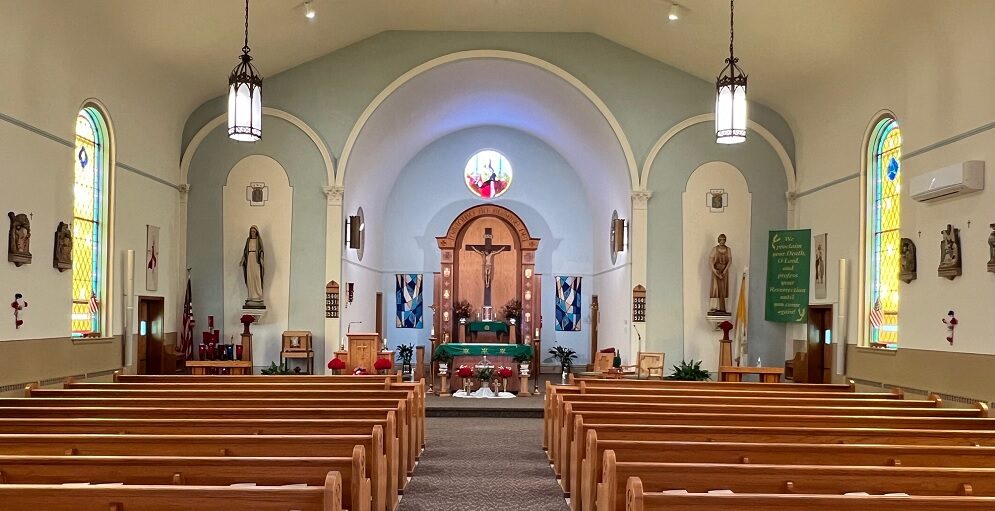If you’ve ever looked on the walls of the sanctuary in Saint John the Baptist or on the rear wall of the nave in Immaculate Conception, you may have noticed the Saint Benedict Medal (see image below). Perhaps you have asked yourself, “What is this medal? And what does it mean?”
What is the Saint Benedict Medal?
The Saint Benedict medal is a powerful sacramental in the Catholic Church. It bears the image of Saint Benedict, a sixth-century monk known for his spiritual wisdom and contributions to monastic life.
The medal is rich in symbolism. Each part represents a particular aspect of Saint Benedict’s life or has a specific spiritual meaning.
The medal is a way to obtain God’s blessings and protection through the intercession of St. Benedict. Wearing it is a way to remind ourselves of our life in Christ and the promises of heaven. It is a form of prayer and yet another way we can incorporate God into our daily lives.
According to the Order of St. Benedict, “The medal is a prayer of exorcism against Satan, a prayer for strength in time of temptation, a prayer for peace among ourselves and among the nations of the world, a prayer that the Cross of Christ be our light and guide, a prayer of firm rejection of all that is evil, a prayer of petition that we may with Christian courage ‘walk in God’s ways, with the Gospel as our guide,’ as St. Benedict urges us.”
The St. Benedict Medal Explained by Fr. Boniface Hicks (8:08)

